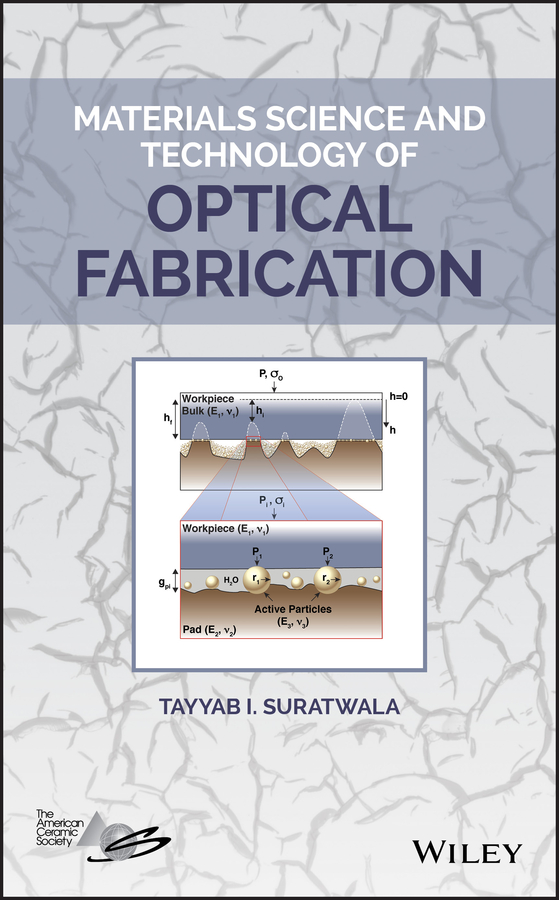Электронная книга: Tayyab Suratwala I. «Materials Science and Technology of Optical Fabrication»

|
Covers the fundamental science of grinding and polishing by examining the chemical and mechanical interactions over many scale lengths Manufacturing next generation optics has been, and will continue to be, enablers for enhancing the performance of advanced laser, imaging, and spectroscopy systems. This book reexamines the age-old field of optical fabrication from a materials-science perspective, specifically the multiple, complex interactions between the workpiece (optic), slurry, and lap. It also describes novel characterization and fabrication techniques to improve and better understand the optical fabrication process, ultimately leading to higher quality optics with higher yield. Materials Science and Technology of Optical Fabrication is divided into two major parts. The first part describes the phenomena and corresponding process parameters affecting both the grinding and polishing processes during optical fabrication. It then relates them to the critical resulting properties of the optic (surface quality, surface figure, surface roughness, and material removal rate). The second part of the book covers a number of related topics including: developed forensic tools used to increase yield of optics with respect to surface quality (scratch/dig) and fracture loss; novel characterization and fabrication techniques used to understand/quantify the fundamental phenomena described in the first part of the book; novel and recent optical fabrication processes and their connection with the fundamental interactions; and finally, special techniques utilized to fabricate optics with high damage resistance. Focuses on the fundamentals of grinding and polishing, from a materials science viewpoint, by studying the chemical and mechanical interactions/phenomena over many scale lengths between the workpiece, slurry, and lap Explains how these phenomena affect the major characteristics of the optic workpiece—namely surface figure, surface quality, surface roughness, and material removal rate Describes methods to improve the major characteristics of the workpiece as well as improve process yield, such as through fractography and scratch forensics Covers novel characterization and fabrication techniques used to understand and quantify the fundamental phenomena of various aspects of the workpiece or fabrication process Details novel and recent optical fabrication processes and their connection with the fundamental interactions Materials Science and Technology of Optical Fabrication is an excellentguidebook for process engineers, fabrication engineers, manufacturing engineers, optical scientists, and opticians in the optical fabrication industry. It will also be helpful for students studying material science and applied optics/photonics. Издательство: "John Wiley&Sons Limited (USD)"
ISBN: 9781119423744 электронная книга Купить за 9755.93 руб и скачать на Litres |
Другие книги схожей тематики:
| Автор | Книга | Описание | Год | Цена | Тип книги |
|---|
См. также в других словарях:
Materials science — Simulation of the outside of the Space Shuttle as it heats up to over 1,500 °C (2,730 °F) during re entry into the Earth s atmosphere Materials science is an interdisciplinary field applying the properties of matter to various areas of… … Wikipedia
materials science — the study of the characteristics and uses of various materials, as glass, plastics, and metals. [1960 65] * * * Study of the properties of solid materials and how those properties are determined by the material s composition and structure, both… … Universalium
Optical contact bonding — is a glueless process whereby two closely conformal surfaces are joined together, being held purely by intermolecular forces. Contents 1 History 2 Explanation 3 Production of an optical contact bond 4 … Wikipedia
technology, history of — Introduction the development over time of systematic techniques for making and doing things. The term technology, a combination of the Greek technē, “art, craft,” with logos, “word, speech,” meant in Greece a discourse on the arts, both… … Universalium
Mathematics and Physical Sciences — ▪ 2003 Introduction Mathematics Mathematics in 2002 was marked by two discoveries in number theory. The first may have practical implications; the second satisfied a 150 year old curiosity. Computer scientist Manindra Agrawal of the… … Universalium
Diffusion of technology in Canada — This article outlines the history of the diffusion or spread of technology in Canada. Technologies chosen for treatment here include, in rough order, transportation, communication, energy, materials, industry, public works, public services… … Wikipedia
